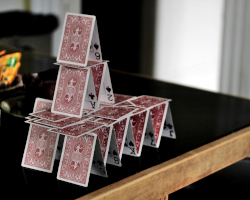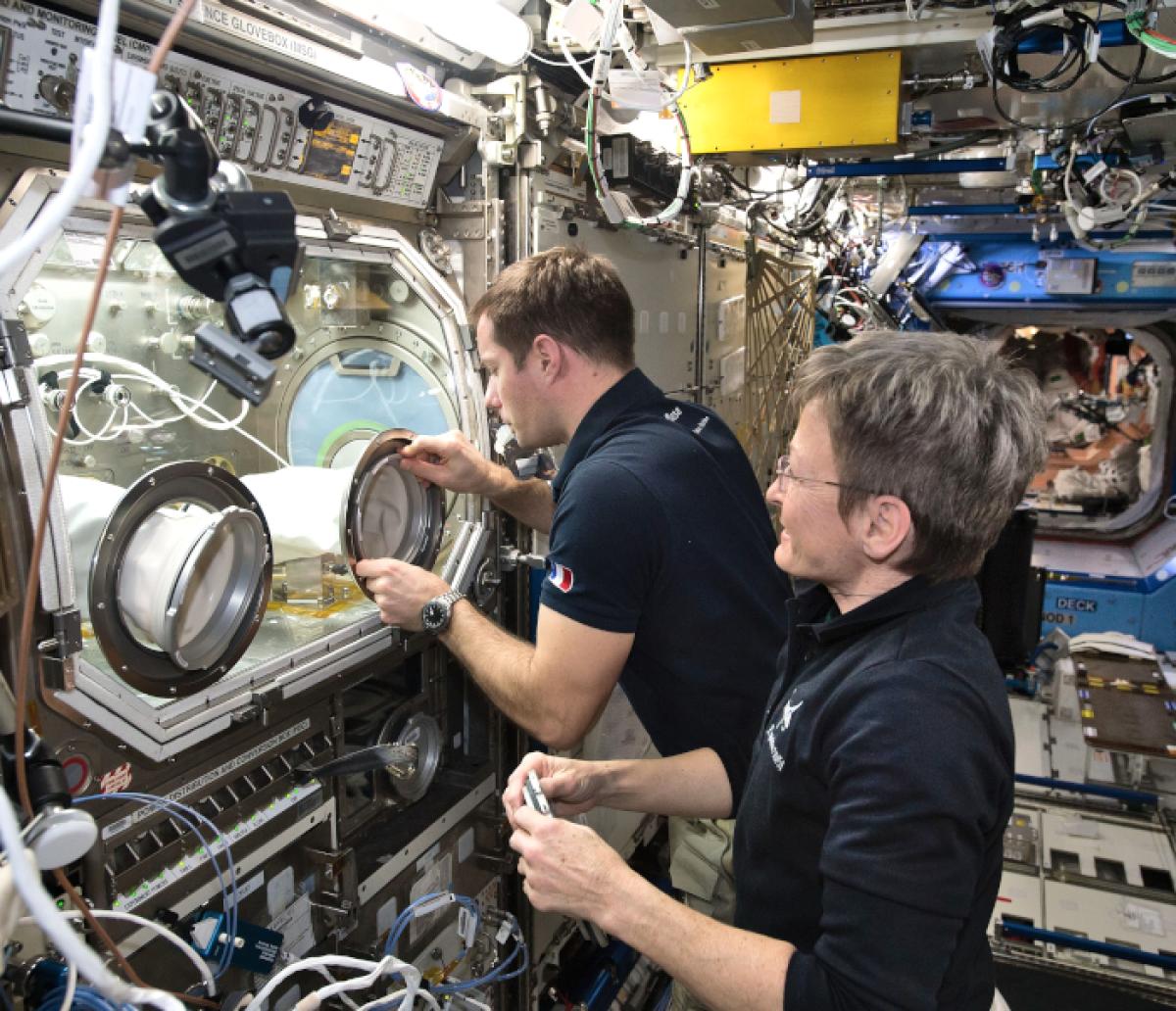Let’s say you wanted to study a house made of bricks. You could look at the bricks and the mortar that connects them, and learn about the materials and how strong they are. Or you could look at the bricks once they’ve been used to build the house. Then you could learn about how the bricks fit together, what shaped structures are best, and how the house as a whole works. Both approaches have their benefits and drawbacks. But if you wanted to know how the house worked as a whole, it would make more sense to study it after it’s built.

Similarly 2D and 3D tissue culture can be compared in much the same way. When cells are placed in a culture dish, they attach to the bottom of the dish and divide, spreading across the dish two-dimensionally. You can study this single layer of cells and learn a lot from it. That’s one of the ways we’ve studied cells for many decades. But, there are things you still miss that way. This is because the cells in our bodies grow very differently than cells in a dish. Our cells secrete complex proteins and sugars into their surroundings. These proteins and sugars form a cell's extracellular matrix (ECM). The ECM gives structural support to the cells (like the walls of a house) and helps them grow in three dimensions. So, do cells growing in 3D (like in our bodies) function differently when compared to cells growing in 2D? If so, how do we culture cells in 3D?
The cells that made milk
In the 1980s, a scientist named Mina Bissell and her lab did an experiment to see if cells grown in 3D behaved differently. To this end, they tried growing cells from the mammary gland tissue in a dish coated with ECM that was made in the lab. Surprisingly, the cells that normally grew in 2D were now growing as spherical, 3D structures. The structures sort of resembled actual mammary glands. The cells also did something astounding that the cells growing in 2D could never do - they made milk. Yes, just like the mammary gland!
Growing cells in scaffolds
The study done by Bissell’s lab made it clear how important a cell's ECM is in its proper functioning. Because of this, many labs across the world have now started growing cells in 3D. One of the popular techniques for doing this is the use of pre-made scaffolds. Scaffolds are 3D materials that mimic the natural ECM. Cells can be cultured in these scaffolds if they offer the right support where the cells can attach. They should also allow the free movement of gasses and nutrients. More importantly, they should be porous and provide enough surface area for the growth of the cells.

Scaffolds can be made from different materials. They might be made of proteins such as collagen or much harder materials, like ceramics. The studies done on cells grown in such 3D scaffolds show that they better resemble cells growing in vivo than cells grown in 2D.
Why does the third dimension matter?
So, growing cells in 3D lets us study them in ways we haven’t before. One of the greatest advantages of 3D tissue culture is in the area of drug discovery. A lot of time and money is spent testing out drugs in 2D tissue culture before they can be sent to clinical trials. However, less than 50% of these drugs actually progress to clinical trials. This is largely because cells grown in 2D do not closely resemble the cells in our bodies. Scientists hope that 3D tissue culture will make a huge impact on drug discovery.

Cells cultured in 3D also act as a great model to study diseases like cancer. Cells grown in 3D closely resemble cells growing in vivo when it comes to gene activity and break-down of drugs. Because of this, they act as great models to study diseases.
3D tissue culture has also paved the way to the field of tissue engineering. Tissue engineering aims to make tissues artificially in the lab. These tissues can be used to replace or regenerate tissues damaged by injury, disease, or aging. This has helped treat several damaged tissues like the bone, cartilage, and heart valves. So, will 3D tissue culture replace 2D tissue culture someday as the best way to study cells? We will have to wait and see.
Additional Images from Wikimedia Commons. Image of astronauts at work by NASA.
Read more about: Growing Cells
Bibliographic details:
- Article: 3D Tissue Culture
- Author(s): Dr. Biology
- Publisher: Arizona State University School of Life Sciences Ask A Biologist
- Site name: ASU - Ask A Biologist
- Date published: 10 Aug, 2022
- Date accessed:
- Link: https://askabiologist.asu.edu/3D-tissue-culture
APA Style
Dr. Biology. (Wed, 08/10/2022 - 21:16). 3D Tissue Culture. ASU - Ask A Biologist. Retrieved from https://askabiologist.asu.edu/3D-tissue-culture
Chicago Manual of Style
Dr. Biology. "3D Tissue Culture". ASU - Ask A Biologist. 10 Aug 2022. https://askabiologist.asu.edu/3D-tissue-culture
Dr. Biology. "3D Tissue Culture". ASU - Ask A Biologist. 10 Aug 2022. ASU - Ask A Biologist, Web. https://askabiologist.asu.edu/3D-tissue-culture
MLA 2017 Style

The 3D structure that cells grow on, and even gravity, affects how they work. Here astronauts aboard the international space station study how tissue cultures grow without gravity.
Be Part of
Ask A Biologist
By volunteering, or simply sending us feedback on the site. Scientists, teachers, writers, illustrators, and translators are all important to the program. If you are interested in helping with the website we have a Volunteers page to get the process started.

